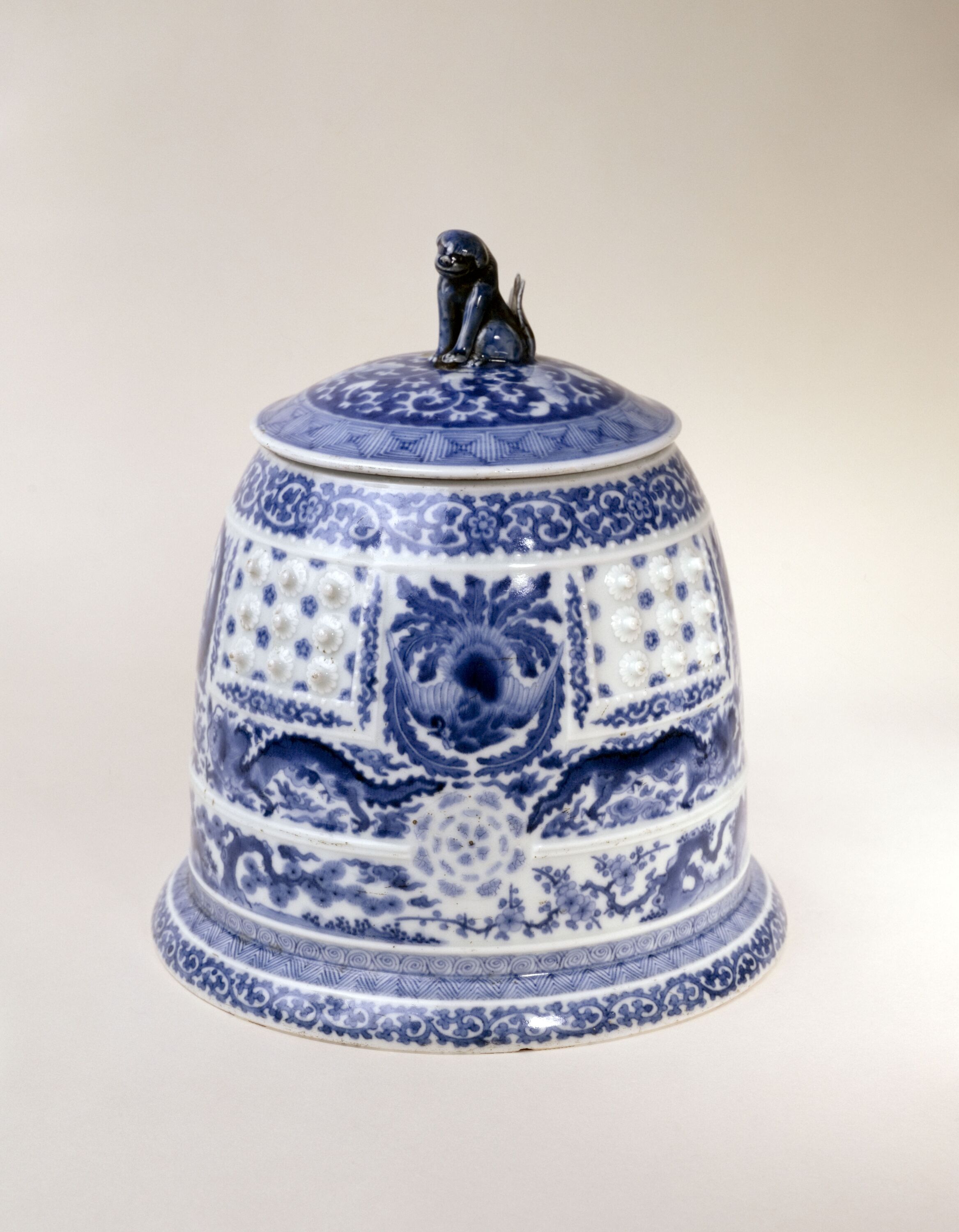
Pot à eau fraîche (mizusashi 水差し) en forme de cloche
Porcelaine, Bleu sous couverte
Pot à eau
Legs : Cernuschi, Henri
M.C. 2893
This cold-water pot in white porcelain, inspired by the Chinese ceramics that were very fashionable in 17th-century Japan, is painted in underglaze cobalt blue (sometsuke) and features a wide variety of geometric and naturalistic motifs arranged in horizontal bands. Its shape is reminiscent of the bronze bells (bonshō) of Chinese provenance that hang in Japanese temples, which are struck with a mallet to call the monks to prayer.
Also of Chinese inspiration are the foliage scrolls (karakusa mon) adorning the base, the upper edge and the top of the lid around the Chinese lion-shaped knob (karashishi), as are the three-clawed dragons surrounded by stylised clouds and the phoenixes forming a circle, which alternate with a decor of florets in relief evoking the protuberances on the bells.
This type of pot, sometimes made of lacquered wood and an indispensable item among the utensils used in a tea ceremony (chanoyu), served to cool boiling water to the correct temperature for the preparation of powdered tea (usucha).
Appreciating the beauty of the vessels and utensils (dōgu no haiken) is an essential part of the tea ritual, where each object deserves careful examination by all the participants.